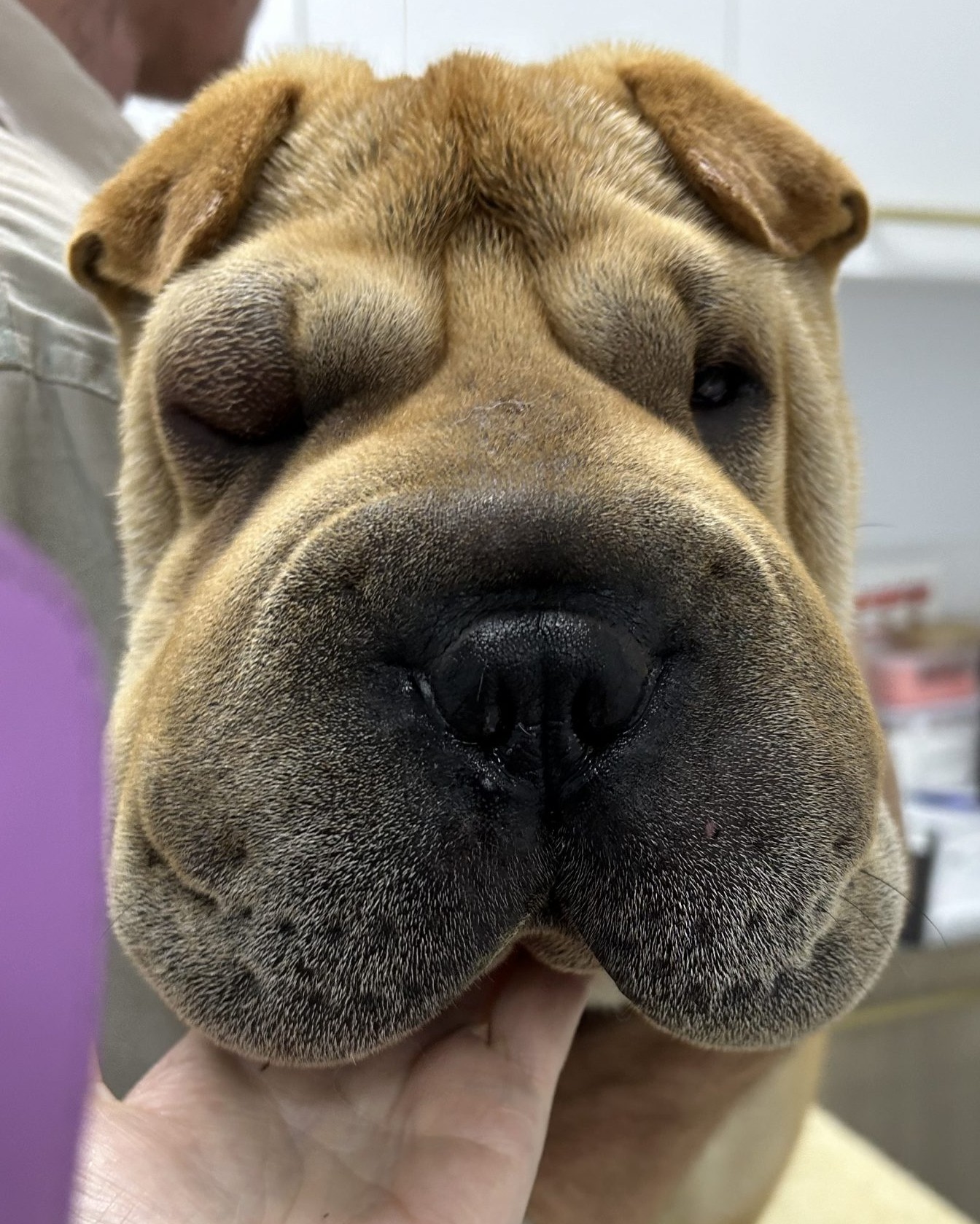What is Anaphylaxis?
Anaphylaxis (also called anaphylactic reaction or anaphylactic shock) is an acute severe allergic
reaction which can be life threatening. Anaphylaxis can be triggered by a variety of allergens,
including foods, snake bites or insect/arachnid stings and bites.
The difference between an allergic reaction and anaphylaxis is that allergies are hypersensitivity
reactions that are local in nature. If the skin is affected, you develop red itchy skin with hives and
sometimes swelling under the skin. If the respiratory tract is affected, you develop sneezing,
wheezing etc. For more information on environmental allergies, click here
(https://www.cronullavetclinic.com.au/atopy-pollen-allergies-pets)
An anaphylactic reaction is a severe acute systemic hypersensitivity reaction. The immune system
has an out-of-control reaction to the allergen, affecting many organ systems. This can potentially be
fatal so is an emergency.
Signs of Anaphylaxis
Symptoms of an anaphylactic reaction can include:
- Cardiovascular shock, such as pale gums, weakness/wobbliness/fainting,
- Gastrointestinal signs such as sudden vomiting and diarrhoea (especially dogs)
- Respiratory signs such as wheezing and problems breathing (especially cats)
- Skin redness, hives, irritation and swelling
- Neurological and ocular symptoms can also occur.
When sudden symptoms are noticed, urgent veterinary care is essential!
Anaphylactic Shock Treatment – Emergency
Emergency treatment is focussed on reducing the out-of-control immune system reaction, as well as
supporting the patient with treatments such as oxygen supplementation, iv fluids, antihistamines,
stronger anti-inflammatory medications, respiratory support etc.
Intensive monitoring (including continuous checking of heart rate, heart rhythm, blood pressure,
oxygen levels, gum colour and refill time etc) and intervention by our vets and nurses is absolutely
critical.
In some cases, if the allergen is known, there may be desensitisation treatment options available, to
hopefully reduce the risk over time.
A Case Study of Successful Desensitisation
When Bobby, a tiny Cavoodle, was almost 10 months old, he stepped on a bee. He came to Cronulla
Veterinary Clinic, where our staff found the bee-stinger and removed it from his foot. This time he
only developed a local reaction of his foot- the foot was red and swollen. He was treated with anti-
inflammatory and antihistamine medication and he came good soon after.
Five months later he stepped on a bee again. This time he had to be rushed to the vet, after
vomiting, turning pale and breathing difficulties.
After stabilisation, we referred Bobby to the dermatology specialists, who tested him and confirmed
he had a severe allergy to bees and wasps. Bobby was very carefully started on a desensitisation
program, which he is still on today.
A year later, Bobby stepped on a bee again, and was stung. He was immediately rushed to Cronulla
Veterinary Clinic, where the stinger was removed and Bobby was admitted for observation. Apart
from a red swollen foot where he was stung, Bobby’s vital signs including blood pressure, heart rate,
breathing, and gum colour remained normal, his temperature was increased at first but came down
soon enough. Proof that the desensitisation treatment was working well, and an anaphylactic shock
was avoided!
If, based on this article, you have any questions or concerns, or for any other concerns and queries,
please don’t hesitate to contact our friendly knowledgeable team on 02 9527 2604, or check out our
many other blogs and handouts on the website.

